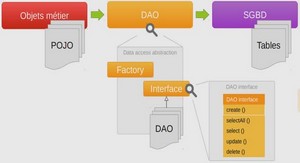Today, both diagnostic and treatment of vascular diseases remain challenging. These diseases include the well-known stenosis of blood vessels due to atherosclerosis but also localized dilatation of arteries (called aneurysms) (Moxon et al., 2010), abnormal connection between arteries and veins (called arteriovenous malformations, AVM) (Cho et al., 2006) and abnormally formed blood vessels such as venous or lymphatic malformations (Bloom et al., 2004). A possible treatment of the aforementioned diseases is blood vessel embolization, which involves the injection by catheter of an embolic agent to stop the flow of blood.
In this Ph.D. project, the main focus is on abdominal aortic aneurysm (AAA), a permanent dilatation of the abdominal aorta due to the weakened vessel wall, which can cause vessel bursts and lead to death within minutes. This chronic disease can be treated via open surgery or, a minimally-invasive alternative to open repair, endovascular repair (EVAR). The longterm success of EVAR remains limited in part due to the development of endoleaks, i.e. the perfusion of the aneurysm outside of the stent graft, which can be treated by sac embolization (Siracuse et al., 2016a).
However, the efficacy of the presently commercialized embolic agents is limited by several drawbacks such as cost, difficulty of handling and the frequent and repeated occurrence of endoleaks (Stavropoulos, Kim, et al., 2005). Therefore clinicians seek for new embolic agents which could address the present gap in the market. The main hypothesis of this thesis is that endoleak recurrence are due to the fact that the current embolic agents used for AAA have not been developed to address the underlying pathophysiology of the disease, but only as basic occlusive agents thanks to their mechanical properties.
The development of AAAs has been linked to persistent, localized inflammation associated with excessive activity of matrix metallopeptidases (MMPs), resulting in the progressive destruction of the vessel’s extracellular matrix (Grzela et al., 2011). Additionally, as previously shown by our team (Fatimi et al., 2012), the presence of the endothelial layer has been implicated in the development and persistence of endoleaks. Therefore, the general aim of this work is to develop an embolization agent that is occlusive, able to inhibit MMP and promote endothelial sclerosis, these being numerous potential approaches for AAA/endoleak prevention and treatment.
Clinical problematic
Structure of the arteries
Arteries are large and elastic vessels, which carry blood away from the heart to the organs to provide tissues with oxygen, nutrients and hormones essential for their proper function. The closer the arteries are to the heart, the higher their diameter and the thicker they are, the largest artery being the aorta. The structure of their walls gives them the mechanical strength and elasticity necessary to support blood flow.
On the contrary, the capillaries which infiltrate the tissues have thin walls which allow nutrient exchanges with surrounding cells (Nicpon-Marieb et al., 1998). The arterial wall is composed of three layers: the tunica intima, tunica media and tunica adventitia .
The tunica intima is the thinnest layer and consists of endothelium, a simple epithelium squamous covering the inside of all blood vessels. In a healthy organism, the endothelium has a smooth surface to reduce friction with blood. The endothelium is a monolayer of endothelial cells arranged longitudinally resting on a layer of connective tissue called basement membrane. It forms a semi-permeable and thromboresistant membrane controlling activation, adhesion and aggregation of platelets, leukocyte adhesion and migration and the proliferation of smooth muscle cells (Nicpon-Marieb et al., 1998).
The tunica media is composed of elastin fibres and vascular smooth muscle cells (VSMC) and gives its mechanical strength and elasticity to the vessel.
Tunica adventitia is the thickest and outermost layer of a blood vessel. It is mainly made of a network of collagen and elastin but fibroblast cells are also found. The collagen serves to anchor the blood vessel to nearby organs, giving it stability. It also contains nerve fibres, lymphatic vessels and in the case of large vessels, it has many tiny blood vessels to irrigate the outer vessel wall, called vasa vasorum. The vessel provides the external elasticity and resistance to deformation (Nicpon-Marieb et al., 1998).
Several vascular diseases can affect the vascular system. This thesis will mainly focus on abdominal aortic aneurysms, an abnormal dilation of the aorta which will be presented in more details in the next section. Other diseases which interest us include arteriovenous malformations (AVM) and lymphatic malformations. AVM is an abnormal connection between arteries and veins, bypassing the capillary system (abnormal communications). Normally, arteries supply oxygen-rich blood from the heart to the body, and veins carry oxygen-depleted blood away back to the heart. While in an AVM, a tangle of blood vessels bypasses normal tissue and directly diverts blood from the arteries to the veins (Crotty et al., 1993).
Furthermore a localized abnormality of lymphatic vessels could lead to a mass in the head or neck named lymphatic malformation. Lymphangioma and Cystic hygroma are two main types f lymphatic malformations. Lymphangioma are malformations which are sometimes found in the mouth, cheek, and tissues surrounding the ear, as well as other parts of the body consisting of a collection of blood vessels and greatly enlarged lymphatic vessels that are overgrown and clumped together. Cystic hygroma are large cyst or pocket of lymphatic fluid that result from blocked lymphatic vessels and usually occur in the neck (Bloom et al., 2004).
One of the treatment options for all these diseases is embolization with an embolic agent although there are some differences in the details of the embolotherapy. AVM and lymphatic malformation and their treatment options will be explained in greater details in the discussion section. In the next section, we explain the definitions, causes and risk factors and treatment options of abdominal aortic aneurysm.
INTRODUCTION |





